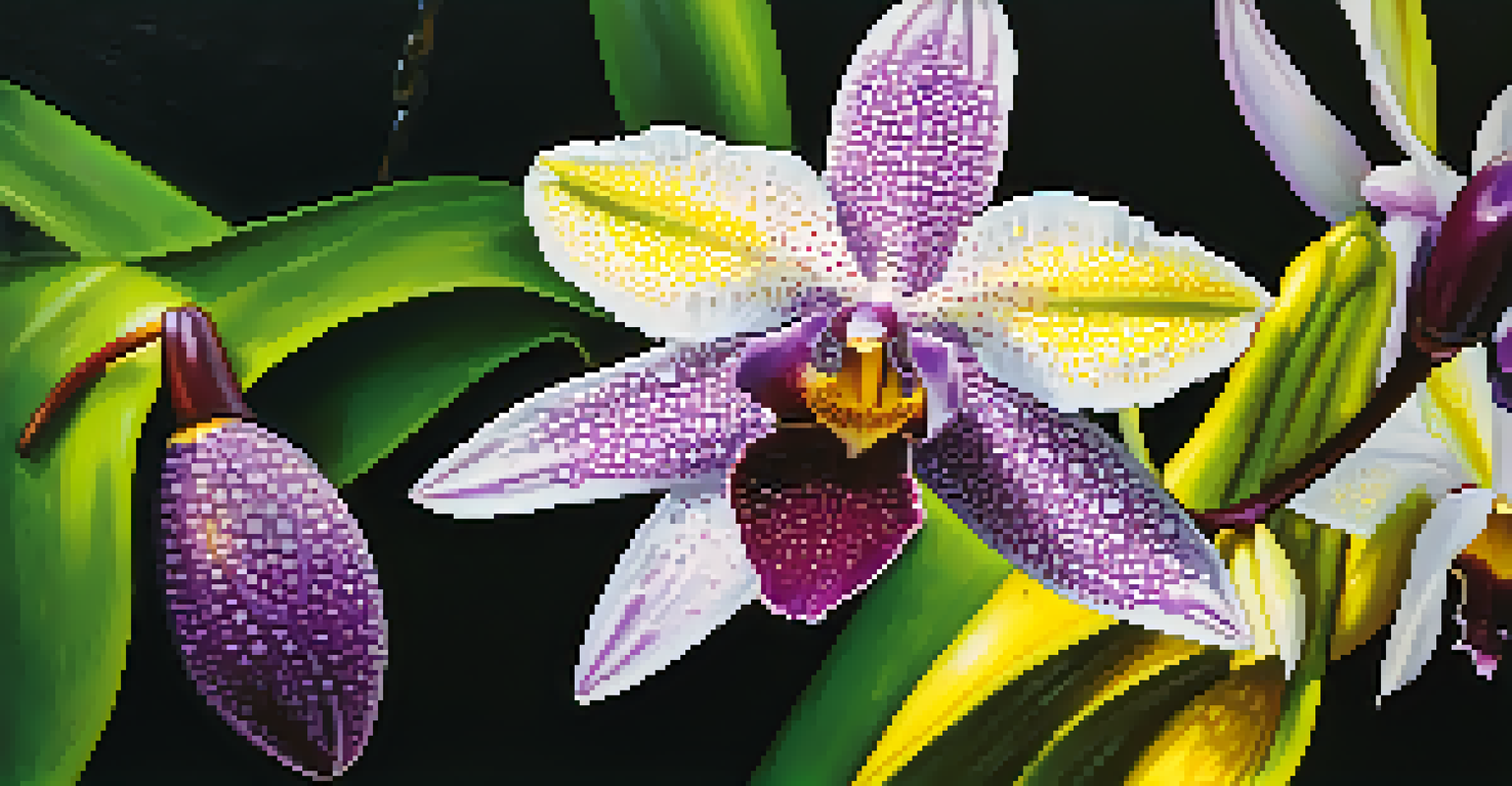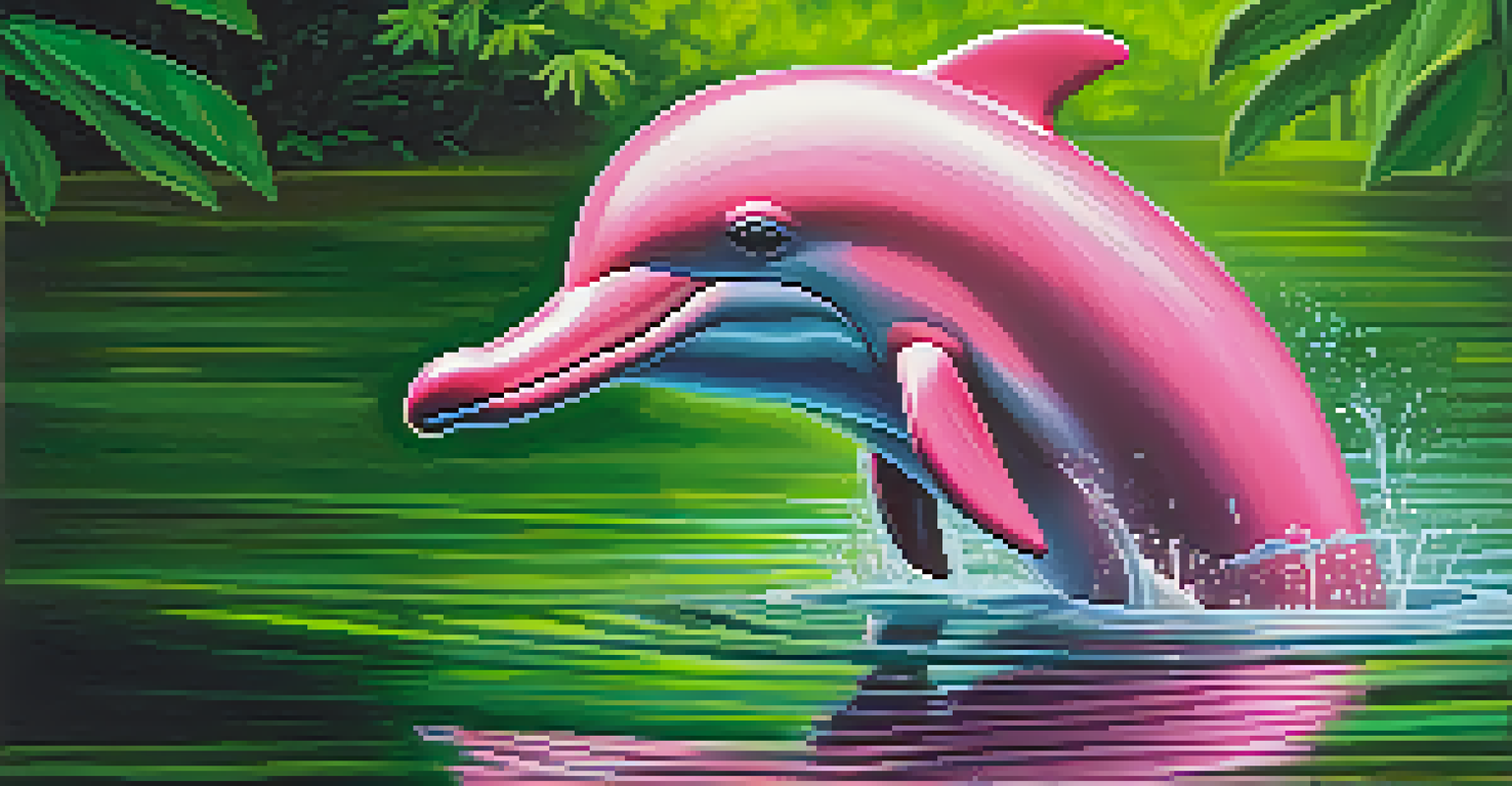Exploring the Amazon: Brazil's Richest Flora and Fauna

Unveiling the Amazon Rainforest's Wonders
The Amazon Rainforest is often referred to as the 'lungs of the Earth' due to its vast expanse and vital role in oxygen production. Covering over 5.5 million square kilometers, it sprawls across several countries, with a significant portion located in Brazil. This vibrant ecosystem is home to an astonishing variety of plant and animal species, many of which can be found nowhere else on the planet.
The clearest way into the Universe is through a forest wilderness.
In fact, the Amazon is estimated to house about 10% of all known species on Earth. From towering trees to delicate orchids, the flora here showcases nature’s creativity and resilience. The sheer scale and diversity of this rainforest make it a unique treasure trove for researchers and nature enthusiasts alike.
As we explore the Amazon, it becomes clear that this delicate balance of life is not just beautiful; it is essential for our planet's health. The intricate web of life here plays a crucial role in regulating the Earth’s climate and supporting global biodiversity.
The Unique Flora of the Amazon
The Amazon is home to an incredible variety of plant life, with over 40,000 different species cataloged. This includes towering trees like the Brazil nut and giant ceiba, as well as an array of colorful flowers, ferns, and vines. Each plant plays a critical role in the ecosystem, providing food and shelter for countless animal species.

One fascinating aspect of Amazonian flora is its ability to adapt to the humid, tropical climate. Many plants have developed unique traits, such as large leaves that help capture sunlight in the dense canopy. Others, like the carnivorous pitcher plant, have evolved to thrive in nutrient-poor soils by attracting and digesting insects.
Amazon's Biodiversity is Vital
The Amazon Rainforest is home to about 10% of all known species on Earth, making it essential for global biodiversity.
Moreover, the Amazon’s diverse plant life contributes to local cultures and economies. Indigenous peoples have relied on these plants for food, medicine, and materials for thousands of years, highlighting the importance of preserving this natural heritage for future generations.
Incredible Fauna: The Animals of the Amazon
The Amazon is also a haven for wildlife, with approximately 2.5 million insect species, 1,300 bird species, and 400 mammal species. Animals such as the jaguar, sloth, and poison dart frog are just a few of the unique creatures that call this rainforest home. Each species plays a vital role in the ecosystem, contributing to the intricate balance of life.
In every walk with nature one receives far more than he seeks.
One remarkable example is the Amazon river dolphin, known for its distinctive pink color and intelligence. These dolphins are not just beautiful; they are important indicators of the health of the river ecosystem. Their presence signifies a thriving habitat, while their decline can signal environmental distress.
In addition to these iconic animals, the Amazon is teeming with lesser-known species that showcase the diversity of life here. From vibrant macaws to elusive anteaters, the rainforest is full of surprises, making it a paradise for wildlife enthusiasts and photographers.
The Role of Indigenous Communities
Indigenous communities have inhabited the Amazon for thousands of years, developing a deep relationship with the land and its resources. These groups possess invaluable knowledge about the flora and fauna, often understanding their medicinal properties and ecological significance better than anyone else. Their practices have preserved the rainforest in ways that modern science is only beginning to appreciate.
By relying on sustainable practices, such as rotational farming and hunting, indigenous peoples maintain the delicate balance of the ecosystem. They understand the importance of biodiversity and work to protect it, ensuring that the forest continues to thrive for generations to come. This harmony with nature is something we can all learn from.
Indigenous Knowledge Preserves Nature
Indigenous communities play a crucial role in maintaining the Amazon’s ecosystem through sustainable practices and deep ecological knowledge.
However, these communities face significant challenges from deforestation and climate change. Protecting their rights and knowledge is crucial not only for their survival but for the future of the Amazon rainforest itself.
The Impact of Deforestation
Deforestation in the Amazon has reached alarming levels, primarily driven by agriculture, logging, and mining. Each year, thousands of acres of rainforest are lost, leading to devastating consequences for both the environment and local communities. This destruction disrupts the delicate balance of the ecosystem, threatening countless species and the climate.
When trees are removed, carbon stored in them is released into the atmosphere, contributing to global warming. The loss of trees also impacts rainfall patterns, which can lead to droughts and negatively affect agriculture both locally and globally. The consequences are far-reaching, extending well beyond the borders of Brazil.
Efforts to combat deforestation include promoting sustainable land-use practices and reforestation initiatives. Raising awareness about the importance of the Amazon and supporting conservation efforts can help protect this vital ecosystem for future generations.
Ecotourism: A Sustainable Solution
Ecotourism is emerging as a sustainable solution to aid the conservation of the Amazon rainforest. By attracting visitors to experience the beauty and biodiversity of the region, local communities can generate income while promoting the importance of preserving their environment. This approach not only supports the economy but also raises awareness about the threats facing the Amazon.
Tourists have the opportunity to engage with local cultures, learn about sustainable practices, and witness the incredible wildlife firsthand. This fosters a deeper appreciation for the rainforest and encourages visitors to become advocates for its protection. For example, guided tours led by indigenous peoples can offer unique insights into their way of life and the importance of the forest.
Deforestation Threatens the Ecosystem
Deforestation driven by agriculture and logging disrupts the delicate balance of the Amazon, leading to severe environmental consequences.
Ultimately, ecotourism can create a win-win situation: it provides financial resources for conservation efforts while ensuring that the natural beauty of the Amazon remains intact for future generations to enjoy.
Conclusion: Protecting the Amazon for Future Generations
Exploring the Amazon is not just about appreciating its beauty; it's about understanding the critical role it plays in our planet's health. The rich flora and fauna of this remarkable ecosystem are intertwined with the lives of indigenous communities and the global environment. As we face pressing issues like climate change and habitat destruction, the need to protect the Amazon has never been more urgent.
By supporting conservation efforts, embracing sustainable tourism, and advocating for indigenous rights, we can help safeguard the Amazon for the future. Every action counts, whether it's raising awareness, reducing our carbon footprint, or choosing to support eco-friendly brands.

Together, we can ensure that the Amazon rainforest remains a thriving sanctuary of biodiversity and a source of inspiration for generations to come. Let's cherish and protect this extraordinary part of our planet.